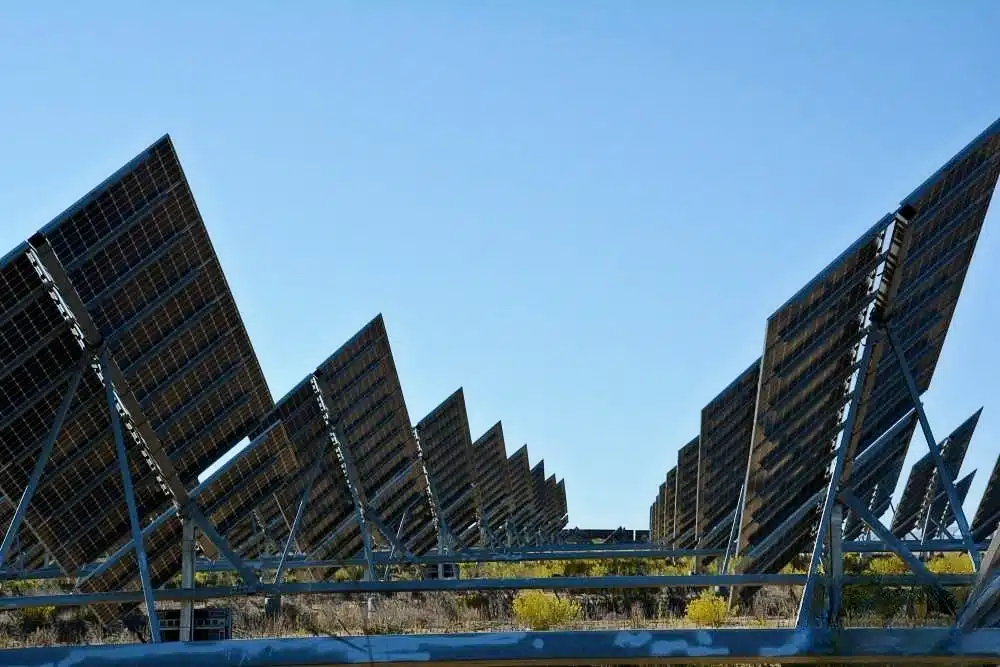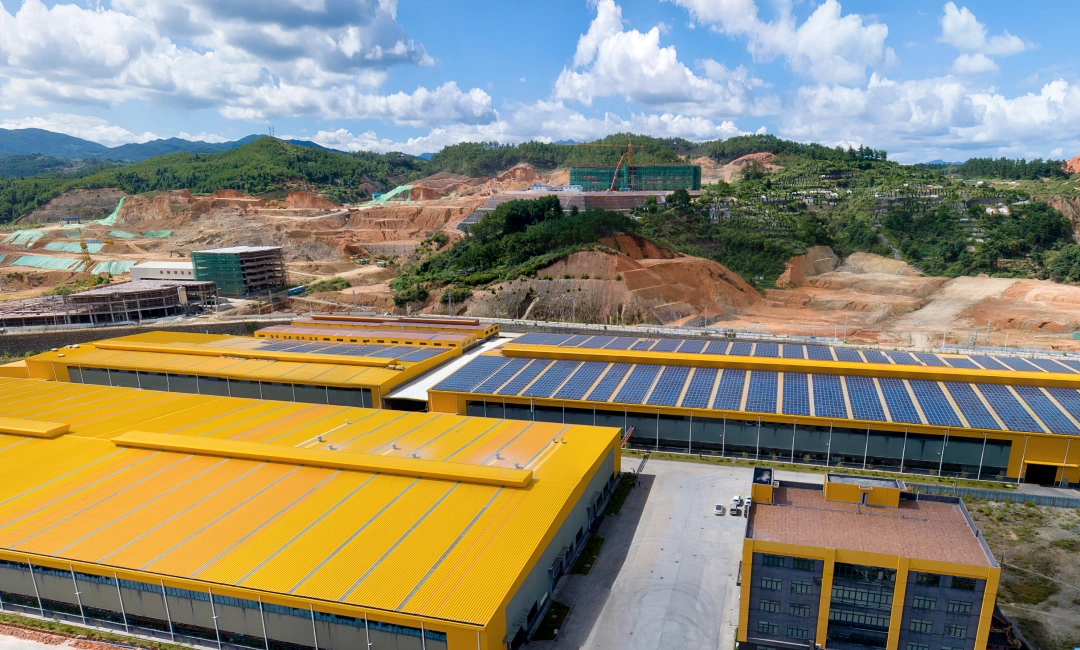
The composition of solar photovoltaic power generation system
2023-12-22
A power generation system that converts solar radiation energy into electrical energy through solar cells is called a solar photovoltaic power generation system, which may also be referred to as a photovoltaic power generation system. Although the application forms of solar photovoltaic power generation systems are diverse and the application scale spans a wide range (from solar lawn lamp applications as small as less than 1W to large photovoltaic power station applications of hundreds of kilowatts or even tens of megawatts), the composition of the system The working principle is basically the same. It mainly consists of solar cell modules (or square arrays), energy storage batteries (groups), photovoltaic controllers, photovoltaic inverters (used when AC power needs to be output), etc., and DC combiner boxes. , DC distribution cabinet, AC combiner box or distribution cabinet, step-up transformer, photovoltaic bracket and some testing, monitoring, protection and other ancillary facilities.
1. Solar cell modules
Solar cell modules, also called photovoltaic panels, are the core components for photovoltaic power conversion and the most valuable part of the photovoltaic power generation system. Its function is to convert the radiant energy of sunlight into DC power, which is sent to the battery for storage. It can also be directly used to drive DC load work, or converted into AC power through a photovoltaic inverter to provide power to users or to generate electricity on the grid. When the power generation capacity is large, multiple battery modules need to be connected in series or parallel to form a solar cell array. Currently used solar cell modules are mainly divided into crystalline silicon modules and thin film modules. Crystalline silicon components are divided into monocrystalline silicon components and polycrystalline silicon components; thin film components include amorphous silicon components, microcrystalline silicon components, copper indium gallium selenide (CIGS) components, cadmium telluride (CdTe) components, etc.
2. Energy storage battery
Energy storage batteries are mainly used in off-grid photovoltaic power generation systems and grid-connected photovoltaic power generation systems with energy storage devices. Their main function is to store the electric energy generated by solar cells and provide power to the load at any time. The basic requirements for batteries in photovoltaic power generation systems are low self-discharge rate, long service life, high charging efficiency, strong deep discharge capability, wide operating temperature range, little or no maintenance, and low price. At present, photovoltaic power generation systems mainly use lead-acid batteries, lead-carbon batteries, lithium iron phosphate batteries, ternary lithium batteries, etc. In small and micro systems, nickel-hydrogen batteries, nickel-cadmium batteries, lithium-ion batteries or super batteries can also be used. Capacitors etc. When large-capacity electrical energy is stored, multiple batteries need to be connected in series or parallel to form a battery pack.
3. Photovoltaic controller
The photovoltaic controller is the main component of the off-grid photovoltaic power generation system. Its function is to control the working status of the entire system and protect the battery; prevent battery overcharging, over-discharging, system short circuit, system polarity reverse and reverse charging at night, etc. In places with large temperature differences, the controller also has a temperature compensation function. In addition, the photovoltaic controller also has working modes such as light-controlled switches and time-controlled switches, as well as display functions for various working states such as charging status, power consumption status, and battery power. Photovoltaic controllers are generally divided into small power, medium power, high power, wind and solar hybrid controllers, etc.
4. Photovoltaic inverter
The main function of the photovoltaic inverter is to convert as much DC power output from battery components or energy storage batteries into AC power as possible, and provide it to the grid or users. Photovoltaic inverters can be divided into grid-connected inverters and off-grid inverters according to different operating modes. Grid-connected inverters are used in photovoltaic power generation systems operating on the grid. Off-grid inverters are used in photovoltaic power generation systems that operate independently. Since under certain working conditions, the power output of the photovoltaic module will change with the change of the output voltage at both ends of the photovoltaic module, and the power output of the module is maximum at a certain voltage value, so the photovoltaic inverter generally has the maximum power Point tracking (MPPT) function, that is, the inverter can adjust the voltage at both ends of the battery module so that the power output of the battery module is always the maximum.
5. DC combiner box
The DC combiner box is mainly used in photovoltaic power generation systems with tens of kilowatts or more. Its purpose is to centrally input and group the multi-channel DC output cables of the battery module array into the DC combiner box, and through the photovoltaic power in the DC combiner box. After protection and detection by special fuses, DC circuit breakers, surge protectors and intelligent monitoring devices, the current is output to the photovoltaic inverter. The use of DC combiner boxes greatly simplifies the connection between battery components and inverters, improves the reliability and practicality of the system, not only makes the line connections orderly, but also facilitates group inspection and maintenance. When a partial failure occurs in the module array, it can be partially separated and repaired, without affecting the continuous operation of the overall power generation system, ensuring that the photovoltaic power generation system can exert its maximum efficiency.
solar carport mount
6. DC distribution cabinet
In large-scale grid-connected photovoltaic power generation systems, in addition to using many DC combiner boxes, several DC distribution cabinets are also used as secondary and tertiary confluences in the photovoltaic power generation system. The DC distribution cabinet mainly connects the DC cables output from each DC combiner box and combines them again, and then connects the output to the grid-connected inverter, which is beneficial to the installation, operation and maintenance of the photovoltaic power generation system.
7. AC power distribution cabinet and combiner box
AC power distribution cabinet is the electrical equipment that connects the inverter and AC load or public grid in the photovoltaic power generation system. Its main function is to receive, dispatch, distribute and measure electric energy, ensure the safety of power supply, and display various electric energy parameters. and monitoring failures. The AC combiner box is generally used in string inverter systems. Its main function is to send the AC power output from multiple inverters into the AC distribution cabinet through secondary centralized confluence.
8.Step-up transformer
The step-up transformer is mainly used in the photovoltaic power generation system to step up the low-voltage alternating current (0.4kV) output by the inverter to the medium-high voltage (such as 10kV, 35kV, 110kV, 220kV, etc.) with the same grid-connected voltage level. The network realizes the long-distance transmission of electric energy. Small-scale grid-connected photovoltaic power generation systems are basically directly connected to the grid at the user side, and the remaining electricity is directly fed into the 0.4kV low-voltage power grid for self-use, so there is no need for a voltage booster.
9. Photovoltaic bracket
The photovoltaic brackets used in photovoltaic power generation systems mainly include fixed tilt angle brackets, tilt angle adjustable brackets and automatic tracking brackets. Automatic tracking brackets are divided into single-axis tracking brackets and dual-axis tracking brackets. Among them, single-axis tracking brackets can be subdivided into three types: flat single-axis tracking, oblique single-axis tracking and azimuth single-axis tracking brackets. In photovoltaic power generation systems, fixed tilt brackets and tilt-adjustable brackets are currently the most widely used.
10. Photovoltaic power generation system ancillary facilities
Ancillary facilities of the photovoltaic power generation system include system operation monitoring and detection systems, lightning protection grounding systems, etc. The monitoring and detection system comprehensively monitors the operating status of the photovoltaic power generation system, including the operating status of the battery module string or array, the working status of the inverter, the voltage and current data of the photovoltaic array, power generation output power, grid voltage frequency, and solar radiation data. etc., and can be monitored through remote connection via wired or wireless networks, and data can be obtained through terminal devices such as computers and mobile phones.
